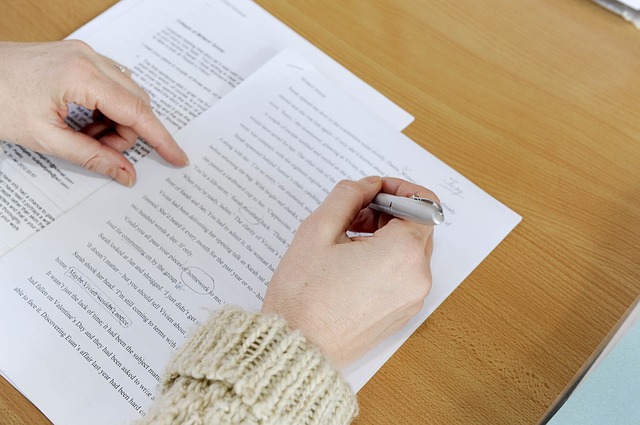When Revising Your Book's Draft Less is More
Biff Barnes
The great architect Mies van der Rohe once observed that in designing buildings, “Less is more.” It is just as true when writing a book. One of the best ways to improve the draft of a manuscript is to make some judicious cuts.
 Courtesy of Workingham Libraries on Pixabay under Creative CommonsStephen King recalls in On Writing how he learned that lesson.
Courtesy of Workingham Libraries on Pixabay under Creative CommonsStephen King recalls in On Writing how he learned that lesson.
I got a scribbled comment that changed the way I rewrote my fiction once and forever. Jotted below the machine-generated signature of the editor was this mot: ‘Not bad, but PUFFY. You need to revise for length. Formula: 2nd Draft = 1st Draft – 10%. Good luck.’
Here are some ideas on where you might find that 10%.
Begin with plot. Cut before you polish. There is no benefit in perfecting a passage that your decide to cut later.
- Maintain momentum. Ask yourself, is this passage necessary? Does it advance the conflict? You’ll probably find some digressions and repetitions that can be eliminated.
- Make your scenes multitaskers. If you use a full scene to present an element of backstory, you have stopped the story’s forward momentum. Find a way to convey this information as part of another scene.
- Make sure there’s action on every page. If not, there’s room to make some cuts to keep the pace of the story moving.
Tighten your prose. Eliminate clichés, similes and metaphors that don’t quite work and overblown language. Let Mark Twain’s advice guide you.
I notice that you use plain, simple language, short words and brief sentences. That is the way to write English – it is the modern way and the best way. Stick to it; don’t let fluff and flowers and verbosity creep in. When you catch an adjective, kill it. No, I don’t mean utterly, but kill most of them – then the rest will be valuable. They weaken when they are close together. They give strength when they are wide apart. An adjective habit, or a wordy, diffuse, flowery habit, once fastened upon a person, is as hard to get rid of as any other vice.
Effective cutting will pare your draft down to the essentials. Your readers will thank you for it.
The great architect Mies van der Rohe once observed that in designing buildings, “Less is more.” It is just as true when writing a book. One of the best ways to improve the draft of a manuscript is to make some judicious cuts.
Stephen King recalls in On Writing how he learned that lesson.
I got a scribbled comment that changed the way I rewrote my fiction once and forever. Jotted below the machine-generated signature of the editor was this mot: ‘Not bad, but PUFFY. You need to revise for length. Formula: 2nd Draft = 1st Draft – 10%. Good luck.’
Here are some ideas on where that 10% might be found.
· Begin with plot. Cut before you polish. There is no benefit in perfecting a passage that your decide to cut later.
1. Maintain momentum. Ask yourself, is this passage necessary? Does it advance the conflict? You’ll probably find some digressions and repetitions that can be eliminated.
2. Make your scenes multitaskers. If you use a full scene to present an element of backstory, you have stopped the story’s forward momentum. Find a way to convey this information as part of another scene.
3. Make sure there’s action on every page. If not, there’s room to make some cuts to keep the pace of the story moving.
· Tighten your prose. Eliminate clichés, similes and metaphors that don’t quite work and overblown language. Let Mark Twain’s advice guide you.
I notice that you use plain, simple language, short words and brief sentences. That is the way to write English – it is the modern way and the best way. Stick to it; don’t let fluff and flowers and verbosity creep in. When you catch an adjective, kill it. No, I don’t mean utterly, but kill most of them – then the rest will be valuable. They weaken when they are close together. They give strength when they are wide apart. An adjective habit, or a wordy, diffuse, flowery habit, once fastened upon a person, is as hard to get rid of as any other vice.
Effective cutting will pare your draft down to the essentials. Your readers will thank you for it.